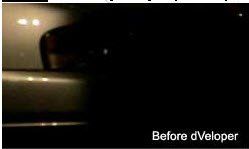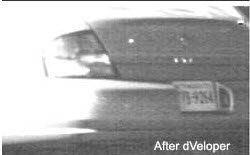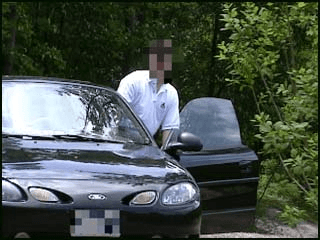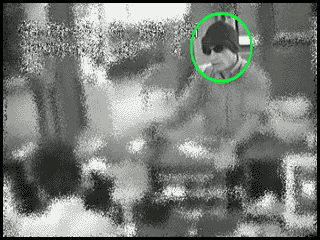VIDEO
Video Analysis and Clarification
In our surveillance society there are hundreds of proprietary manufacturer specific digital video formats that are not viewable with traditional players. MVP can open, access, capture, transcode and enhance this valuable evidence into a lossless, meaningful and user friendly format that is flawless and reliable. We can also work with original tape based (VHS & S-VHS) surveillance materials.
We employ the latest technology in our constantly updated digital suite. Equipped with sophisticated state of the art custom hardware and software we offer advanced abilities to apply the science of image enhancement and analysis to recover, clarify or develop the information provided as a still photograph or video. Original materials, analog or digital, are never altered, we work with lossless digital copies thus all processing is non-destructive.
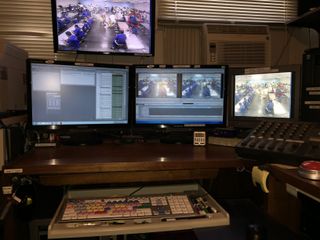
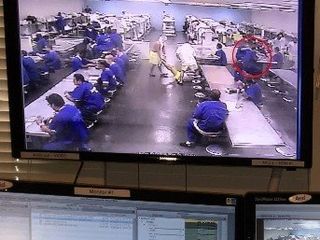
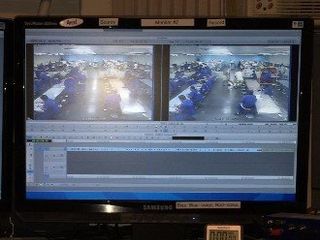
What we cannot do is to find and bring to view original discarded information that is the result of the surveillance system manufacturer or user’s compression and space savings techniques used on the system’s hard to extend recording time. This is typical.
Before After
Before After

Video Analysis
We analyze video in order to easily detect anything that is suspicious or out of place.
The methods we employ include:
- Avid Timeline:
Containing up to 24 video and audio tracks, avid timeline gives you unparalleled flexibility when examining forensic video.
- Avid:
The analyst can examine videos frame by frame. There are 30 frames per second on most videos and 60 fields per second on interlaced videos.
- De-Interlacing:
Frame-based video to avoid blurry prints and allowing up to 60 images per second to be analyzed.
- De-Multiplexing:
Multiplexing was common place on VHS tapes. Multiple rapidly alternating camera views are difficult if not impossible to view intelligently. De-multiplexed is required to isolate and separated the camera views you would like to observe. These views can be saved as individual video clips and/or as "matrix" video clips, which is a single video clip with up to 16 individual camera views playing simultaneously.
- Time-Lapse Footage:
Original source content can be converted into real time.
- Comparative Analysis:
Reverse projection and eight reliable analyses are made with the Avid™ superimposed feature, along with picture in picture.
Capture or Acquisition
- Video Acquisition: Digitize full-screen (720 x 486) uncompressed NTSC video from any composite, components, S-Video, DV or MPEG 50 video source. Many digital formats digital formats including AVI, Quick Time, WMV and MPEG resident on CD, DVD, Hard Drive or Flash Drive.
- Uncompressed Video: 1:1 video option (industry standard ITU-R 601), which is digitized footage with no quality degradation.
- Capturing Digital Surveillance: DVR decoding or Omnivore software captures, digitizes and transcodes the original footage and then duplicates the file in an uncompressed digital format for analysis and processing. The original is never touched.
- Capturing Analog Video: Play tapes, capture and digitize in Standard or High definition. Older surveillance systems were tape based, typically VHS or S-VHS.
- NTSC Standard Video: Digitize video at the industry standard 720 x 486 pixel matrix (349,920 pixels), ensuring analysis of every pixel.
Video Clarification
Some of the video processing techniques utilized to clarify, enhance and to improve the definition of video signals are as follows:
• Frame Averaging:
Removes video noise, graininess, and hidden details.
• Highlighting or Masking: Highlight an area of moving video to track and bring it to attention or obscure an area to hide sensitive information.
• Resizing: Video may be Enlarge (Zoom or Magnify) to see fine details or reduced in size in order to expose the edge or cropped area that may contain time stamps, which is commonly hidden from view by a typical TV underscan.
• Stabilization:
Stabilize unstable, wandering or shaky video.
• Color Correction:
Tools are used to analyze and correct poor lighting and compensate for camera dome filters in order to recover the accurate colors of the scene.
• Clarify:
Illuminate dark and poor quality video footage by adjusting the brightness, contrast and gamma levels. We can also remove noise, video graininess and other transient items like rain and snow to reveal hidden details.
• Picture-in-Picture: Display one moving image within another, offering dynamic, side-by-side comparisons. This helps demonstrate consistencies between known and suspect images.
• Comparative Analysis
(Reverse Projection): Reliable height analysis made by superimposes images of a calibrated measurement standard over the target’s (suspect) picture and then look through one video track to another..
• Timecode AVX: Allows the forensic video analyst to timestamp security video images to within 1/60th of a second.
• Locators:
Quickly and easily annotates video evidence.
• Still Images:
Still pictures may be downloaded as JPEG, TIFF or in other formats.
• MetaSunc™: Avid systems provide 24 tracks for synchronized metadata, linking any digital investigative asset directly to the video evidence. Assets include Word Processing™ documents, spreadsheets, email, digital photos, or virtually any other digital file that can be accessed on a computer.
• Script-Based Editing:
Transcript of a suspect or witness interview or of an undercover operation can be aligned to the audio and video recordings. A simple word search can locate a specific word, phrase, or sentence, and then cue and play the video from that point.
• Damaged Media Repair:
Video recordings can be repaired, restored or retrieved for playback and examination, if the damage is not too extensive.
Other Post Production Services
- Add, delete or separate audio or video information.
- Create a storyline: Clip or Scene Arrangement in a logical order to clarify and understand the meaning of the video.
- Consolidation:
After completion the analyst can discard non-relevant video and audio clips.
- Mix or separate audio.
- Freeze Action
(stop motion)
- Speed correction or change:
Adjust to correct real time speed or utilize slow motion or accelerated motion the video clips to more clearly see what is happening
- De-Interlace:
on frame based video, allowing up to 60 images per second to be analyzed.
- Titling:
Labeling a feature or a highlighted item can help with understanding the image. Can help in explaining complicated videos.
- Edit detection:
See if the video has been altered from it’s original state.
- Image Rotation:
Correction for upside down, sideways or other misaligned images.
- Note:
Our non-destructive video editing is used only to clarify the evidence and not to conceal or alter the original meaning, intent of the materials. This is done for the courts gratification. Non-pertinent materials may be deleted for clarity. The original source material is never altered in any way. A confidential written report is usually supplied that may delineate all of the alterations along with the findings. There is always an evidential pathway from the original footage to the newly generated video.
Evidence Disclosure
- Exporting:
Export to over two dozen industry standard file formats, create an entire sequence of uncompressed still images containing every image of the suspect caught on video or encode to other digital formats including AVI, Quick Time, WMV and MPEG.
- DVD Authoring: Create and establish easy accessible chapters on the disc so that the user my find the crucial points in an instant facilitating courtroom presentation.
- CD/DVD Burning:
Record audio and/or video contents onto a disc for storage and display.
- Flash Drive:
Content can also be loaded onto a flash drive.
Presentation
Presentation can make or break your case; it can make all the difference. It can give you a true picture. You will be able to access what you want, when you want it, how you want it and in the best light. All of this can be done in a non-destructive way, without altering the original message. Good video evidence can be a most valuable asset in court; it can make or break your case.
Too much information can put the viewer to sleep. Slow Motion, freeze frame and even speeding up the motion may help. Sometimes reducing the image size can guarantee that the pertinent information that was hidden in the edges will now be clear.
Presentation goes beyond enhancement and clarification. Just adjusting the color, brightness, contrast, and Gama doesn’t always give the true picture. Enlarging the picture without the proper pixel count (resolution) often just distorts the image. Frame averaging can help.
MVP will always give you the best case evidential presentation, for your case, with a complete path to the original material. MVP will utilize the best approach for your case.
Notes: Video editing is used only to enhance or make clear the evidence and not to conceal or alter the meaning or intent of the material. This is done for the court's gratification. Non-pertinent materials may be deleted for clarity. Original source material is never altered. A written report is usually supplied, on a confidential basis, to the client delineating the alterations performed and findings. The report also may establish an evidentiary pathway from the original footage to the newly generated video.
Mattern's Video Productions, Inc.
SERVICE AREA
Nationwide
PHONE
(626) 573-4495
Business Hours
- Mon - Fri
- -
- Sat - Sun
- Closed
© 2024
All Rights Reserved | Mattern's Video Productions, Inc.

